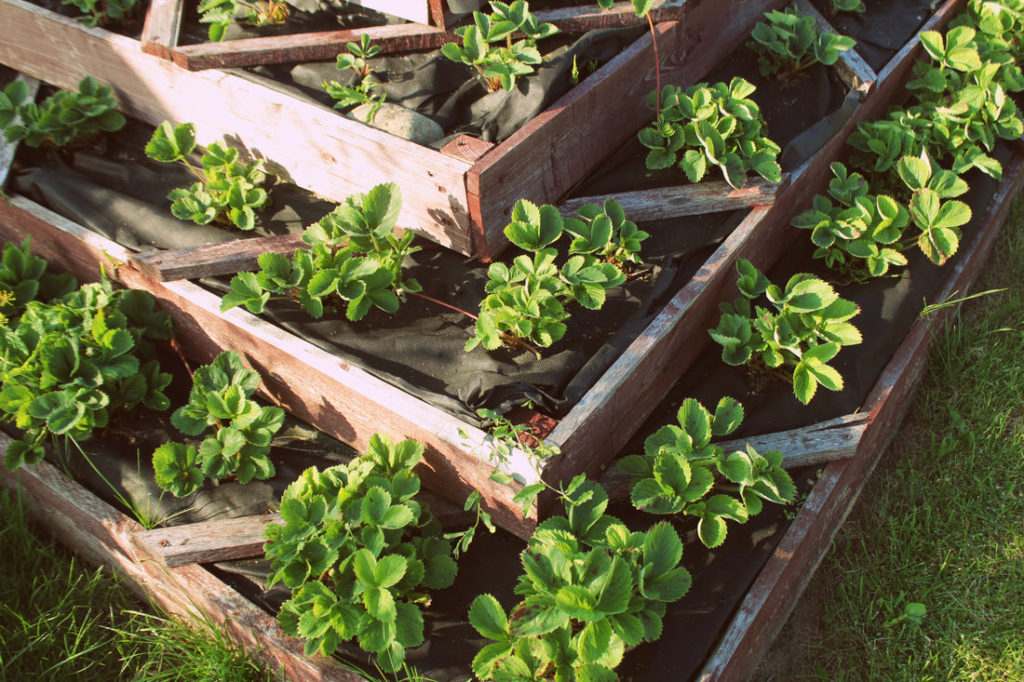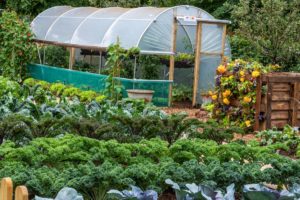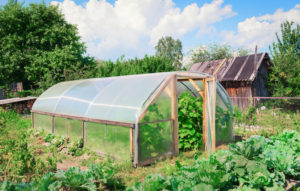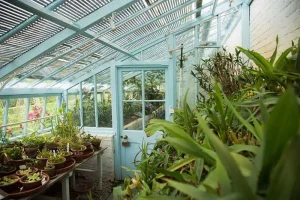Transform your life and contribute to a more sustainable future by adopting permaculture principles in your daily routines.
By integrating these eco-friendly practices, you can create a self-sufficient lifestyle that not only benefits the environment but also improves your overall well-being.
From growing your own food using biointensive gardening techniques to harnessing renewable energy sources like solar power and composting for natural fertilizers, there are countless ways to incorporate permaculture into your life.
Whether you’re a seasoned gardener or just starting out on your sustainability journey, these practical tips will inspire and empower you to make positive changes that benefit both people and the planet.
Design your space for multi-functionality
Instead of having separate areas for different activities, design your space to be multi-functional. For example, incorporate a raised bed vegetable garden into your lawn, or use a trellis to support both climbing plants and a shade structure.
Rather than having separate areas for different activities, look for ways to combine functions within a single space.
For instance, you can create a raised bed vegetable garden within your lawn, allowing you to grow your own herbs and vegetables while also enjoying a lush, green lawn.
Alternatively, you can install a trellis that supports both climbing plants and a shade structure, providing a functional and aesthetically pleasing feature for your outdoor space.
By incorporating multi-functional elements into your outdoor design, you can increase the utility and enjoyment of your space, while also saving time and resources.
These elements can help to create a more cohesive and visually appealing outdoor space, tying together different features and activities in a harmonious whole.
For example, you could incorporate seating and dining areas into your vegetable garden, allowing you to enjoy a meal or host guests while still enjoying the benefits of your garden.
With a little creativity and planning, your outdoor space can be both functional and beautiful, making it the perfect setting for a variety of activities and experiences.
Use permeable materials
Permeable materials like gravel, brick, or stone allow rainwater to penetrate and recharge groundwater, reducing runoff and erosion. This can help prevent pollution and replenish local aquifers.
Using permeable materials such as gravel, brick, or stone in your landscaping and construction projects can have a profound impact on the health of your local environment.
These materials allow rainwater to penetrate and recharge groundwater, reducing runoff and erosion.
By slowing down the flow of water, permeable materials give the water a chance to seep into the soil and replenish local aquifers, helping to prevent pollution and maintain healthy groundwater levels.
Permeable materials can help to regulate soil temperature and moisture, creating a more stable and thriving ecosystem.
By choosing permeable materials for your landscaping and construction projects, you can play a important role in protecting your local environment and promoting sustainable living.
Harness the power of gravity
Use gravity to your advantage by designing your space to flow from highest to lowest point. This can help to collect and store rainwater, as well as reduce the need for irrigation.
Harnessing the power of gravity is a simple yet effective way to design your space in a way that not only benefits the environment, but also your wallet.
By designing your space to flow from highest to lowest point, you can take advantage of gravity’s natural force to collect and store rainwater.
This can provide a reliable source of irrigation for your plants, reducing the need for expensive irrigation systems.
By incorporating a gravity-fed rainwater harvesting system, you can save money on your water bills and reduce your overall carbon footprint.
Not only does this design approach benefit the environment, but it can also be aesthetically pleasing.
By incorporating natural elements such as ponds and water features, you can create a visually stunning space that blends seamlessly with the surrounding landscape.
By using locally sourced materials and incorporating green roofs and walls, you can create a space that is not only functional but also beautiful.
Incorporating gravity-fed rainwater harvesting into your space design can be done in a variety of ways.
One option is to create a rain garden, a shallow depression in the ground that collects and filters rainwater.
Another option is to install a cistern, a large container that stores rainwater for later use.
By incorporating these features into your space design, you can not only harness the power of gravity but also create a beautiful and sustainable outdoor space.
Integrate permaculture principles into your garden
Use permaculture principles such as companion planting, polycultures, and guilds to create a diverse and resilient garden ecosystem. This can help to maintain soil health, control pests and diseases, and promote biodiversity.
By incorporating permaculture principles into your garden, you can create a diverse and resilient ecosystem that not only thrives but also maintains soil health, controls pests and diseases, and promotes biodiversity.
One of the key principles of permaculture is companion planting, which involves planting different species together that have a symbiotic relationship.
For example, planting nitrogen-fixing legumes with non-legume crops can enrich the soil with nitrogen, while planting marigolds with vegetables can repel pests and attract beneficial insects.
Another important principle is polycultures, which involve planting multiple species together in the same bed.
This not only creates a diverse ecosystem but also helps to reduce soil erosion and increase productivity.
Guilds are groups of plants that are intentionally planted together to create a mutually beneficial ecosystem.
For example, planting a combination of fruit trees, berry bushes, and herbs can create a self-sufficient and productive garden ecosystem.
By integrating these permaculture principles into your garden, you can create a thriving and sustainable ecosystem that requires minimal inputs and outputs, making it an ideal choice for environmentally conscious gardeners.
Use native plants
Native plants are adapted to the local climate and soil conditions, making them more drought-tolerant and less susceptible to pests and diseases. They can also provide vital habitat for local wildlife.
Choosing native plants for your landscape is a smart and sustainable decision that will not only save water but also support local biodiversity.
Native plants are evolutionarily adapted to the specific climate and soil conditions of your region, making them more resilient to drought and other stressors.
As a result, they require less water, fertilizer, and pesticides, which reduces your environmental footprint and saves you money.
In addition, native plants provide vital habitat for local wildlife, such as bees, butterflies, and birds, which helps maintain the balance of your local ecosystem.
By selecting native plants, you can create a beautiful and functional landscape that benefits both you and the environment.
* For sunny areas, choose plants like yarrow (Achillea millefolium), bee balm (Monarda didyma), and black-eyed Susan (Rudbeckia hirta).
* For shady areas, consider plants like salal (Gaultheria shallon), Oregon grape (Mahonia aquifolium), and red twinberry (Lonicera involucrata).
* For wet areas, try plants like sedge (Carex spp.), cattails (Typha spp.), and water tolerant grasses like blue grama (Bouteloua gracilis) or buffalo grass (Bouteloua dactyloides).
Remember, when selecting native plants, be sure to choose plants that are suitable for your specific climate, soil type, and location.
It’s also important to purchase plants from reputable nurseries that propagate their own stock, as this ensures that the plants are not only native but also free of pests and diseases.
By choosing native plants, you can create a beautiful and low-maintenance landscape that will thrive in your local conditions.
] Write a detailed paragraph that elaborates on the text.
Use native plants: Native plants are adapted to the local climate and soil conditions, making them more drought-tolerant and less susceptible to pests and diseases.
For shady areas, consider plants like salal (Gaultheria shallon), Oregon grape (Mahonia aquifolium), and red twinberry (Lonicera involucrata).
For wet areas, try plants like sedge (Carex spp.), cattails (Typha spp.), and water-tolerant grasses like blue grama (Bouteloua gracilis) or buffalo grass (Bouteloua dactyloides).
Remember, when selecting native plants, be sure to choose plants that are suitable for your specific climate, soil type, and location.
Consult with a local nursery, gardening expert, or online resources to find the best plants for your area.
Native plants will not only be more resilient and low-maintenance, but they will also contribute to the local ecosystem and support native wildlife.
When you plant native species, you are not only improving the look of your landscape, but you are also helping the environment and the local ecosystem thrive.
By selecting plants that are well-suited to your specific climate and location, you can reduce the amount of water, fertilizer, and pesticides needed to maintain your landscape, creating a more sustainable and eco-friendly outdoor space.
Planting native plants in your landscape will also help to attract local wildlife, such as bees, butterflies, and birds.
These plants will provide food and shelter for these animals, and will help to support the local biodiversity.
Native plants require less maintenance and upkeep, which will save you time and money in the long run.
By selecting the right native plants for your landscape, you can create a beautiful, sustainable, and low-maintenance outdoor space that is perfect for your home and the environment.
Create a productive edges
Edges between different ecosystems, such as between a garden and a forest, can be particularly productive and diverse. Incorporate productive edges into your design by planting fruit trees, berry bushes, or other edge-tolerant plants.
Creating productive edges between different ecosystems can significantly enhance the diversity and productivity of your permaculture design.
By strategically planting fruit trees, berry bushes, and other edge-tolerant plants at the boundaries of your garden and forest, you can capitalize on the unique characteristics of each ecosystem.
The contrasting microclimates and soil conditions along the edges can support a wide variety of plants, fostering a diverse and resilient ecosystem.
For example, apple and pear trees can thrive along the forest edge, where they receive partial shade and a mixture of nutrient-rich and poor soil.
Meanwhile, berry bushes like raspberries and blackberries can flourish in the sunny areas along the garden edge, benefiting from the loose, fertile soil and close proximity to the garden’s irrigation system.
These edge-tolerant plants can provide multiple harvests throughout the season, and their diverse fruiting patterns can help ensure a steady food supply.
By intentionally incorporating productive edges into your design, you can create a more complex and dynamic ecosystem that maximizes resource utilization and supports a wide range of plant and animal life.
This approach not only enhances the productivity of your permaculture system but also promotes ecological harmony and biodiversity, ensuring a healthy and resilient ecosystem for generations to come.
Incorporate aquaculture
Aquaculture, or the cultivation of fish and other aquatic animals, can provide a sustainable source of protein and help to reduce the carbon footprint of your diet. Consider incorporating a pond or aquaponic system into your design.
Incorporating aquaculture into your homestead can provide a sustainable source of protein and help reduce your carbon footprint.
One option is to create a pond-based aquaculture system, where you can raise fish, such as tilapia or catfish, and use the waste generated by the fish to fertilize vegetables grown in the surrounding area.
Another option is to implement an aquaponic system, which combines aquaculture with hydroponics, allowing you to grow plants and fish together in a closed-loop system.
This not only reduces waste and energy use, but also creates a symbiotic relationship between the fish and plants, promoting healthy growth and biodiversity.
With proper planning and management, aquaculture can be a highly productive and sustainable component of your homestead, providing a steady supply of fresh, healthy protein for you and your family.
Use salvaged materials
Salvaged materials, such as reclaimed wood or repurposed metal, can be used to create garden structures and pathways while reducing waste and conserving resources.
When it comes to building garden structures and pathways, why not consider using salvaged materials?
Not only does this approach help reduce waste and conserve resources, but it can also add a unique and character-filled element to your garden design.
Reclaimed wood, for example, can be used to create beautiful pergolas, arbors, or garden benches that exude a warm, weathered look.
Similarly, repurposed metal can be fashioned into eye-catching trellises, garden furniture, or decorative accents that add a touch of industrial chic to your outdoor space.
By opting for salvaged materials, you’ll not only be reducing the demand for new materials and the energy required to produce them, but you’ll also be giving these materials a new lease on life and breathing fresh appeal into your garden design.
Want More? Dive Deeper Here!
Hey there! If you’re the type who loves going down the rabbit hole of information (like we do), you’re in the right spot. We’ve pulled together some cool reads and resources that dive a bit deeper into the stuff we chat about on our site. Whether you’re just killing time or super into the topic, these picks might just be what you’re looking for. Happy reading!






